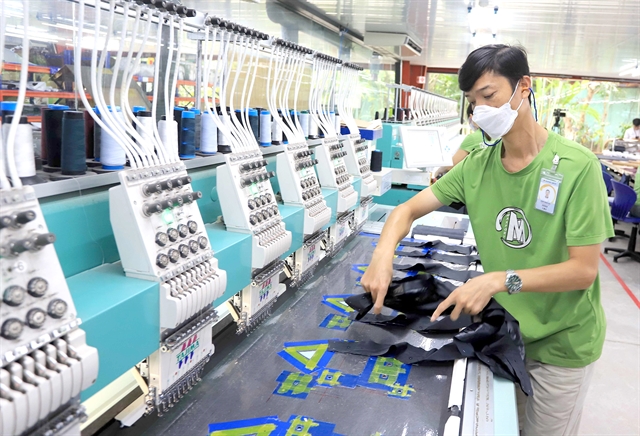 Economy
Economy

Sustained improvements in new orders support job creation with employment rises for the first time in four months, while business confidence jumped to one-year high.

|
| Garment production plant of Maxport Limited in Thái Bình Province. The Vietnamese manufacturing sector continued to grow marginally in February with both output and new orders up for the second month straight. — VNA/VNS Photo Thế Duyệt |
HÀ NỘI — The Vietnamese manufacturing sector continued to grow marginally in February with both output and new orders up for the second month straight, according to a release on Friday by S&P Global Vietnam.
Sustained improvements in new orders support job creation with employment rises for the first time in four months, while business confidence jumped to a one-year high.
The S&P Global Vietnam Manufacturing Purchasing Managers' Index™ (PMI®) posted 50.4 in February, up fractionally from 50.3 in January and above the 50.0 no change mark for the second consecutive month. “The rate of improvement in the health of the sector signalled by the index remained only marginal,” the report wrote.
“Firms continued to scale back purchasing activity, however, opting instead to draw down inventories to support output and order requirements. Meanwhile, firms raised selling prices in response to higher input costs, albeit only modestly.”
New orders increased modestly for the second month running, with some survey respondents linking higher total new business to improved new orders from abroad. The rate of growth in new export orders slowed, however, and was only marginal.
“Consistent with the picture for new orders, output growth was recorded for the second consecutive month in February. The latest rise was modest and broadly in line with that seen in January. Production increased in the consumer and investment goods sectors, but the intermediate goods category saw a reduction.”
The report highlighted that higher new orders encouraged manufacturers to expand their staffing levels for the first time in four months, and to the greatest extent in a year. However, a number of respondents indicated that new hires had only been on a temporary basis.
As manufacturers opted to use up stocks of purchased inputs in February as opposed to buying new items, purchasing activity decreased marginally for the fourth month running, while the latest fall in stocks of inputs was the most pronounced since June 2021.
In addition, firms faced lengthening of suppliers’ delivery times again in February amid reports of shipping delays which coincided with reports of higher transportation costs, in turn often linked to rising oil prices.
Some manufacturers passed on higher input costs to their customers, leading to a slight increase in selling prices following a marginal decrease in the previous survey period.
Production expansion plans and work on new products contributed to a jump in business confidence midway through the first quarter, with positive sentiment regarding output also reflecting expected new order growth, according to the report. “Confidence reached a one-year high as close to 55 per cent of respondents expressed optimism.”
“Vietnamese manufacturers were able to build on the return to growth seen in January with a further expansion in February. Particularly positive elements of the latest PMI survey were renewed job creation and the strongest business confidence for a year,” according to Andrew Harker, economics director at S&P Global Market Intelligence.
He said the overall expansion remained relatively muted, however, and this led to further caution with regard to purchasing and inventory holdings. Likewise, although output prices increased following a fall in January, the rate of inflation was only marginal as some firms remained reluctant to hike prices in a competitive environment.
"Manufacturers will need to see stronger and sustained growth of new business before they can be confident enough to invest in inputs and start to raise their selling prices more in line with their own cost burdens." — VNS